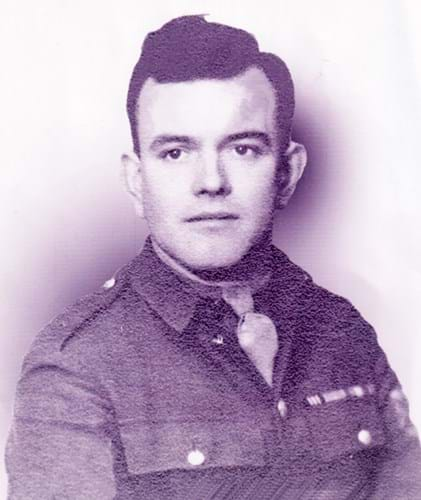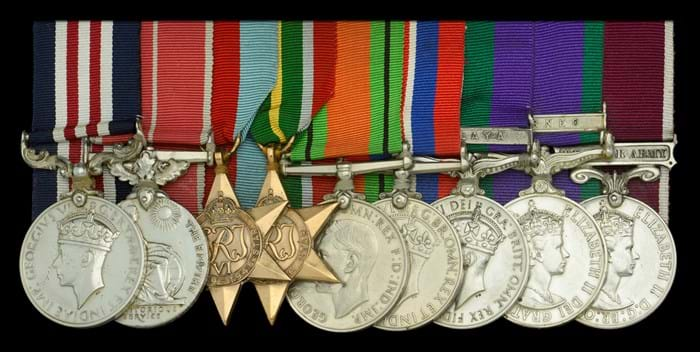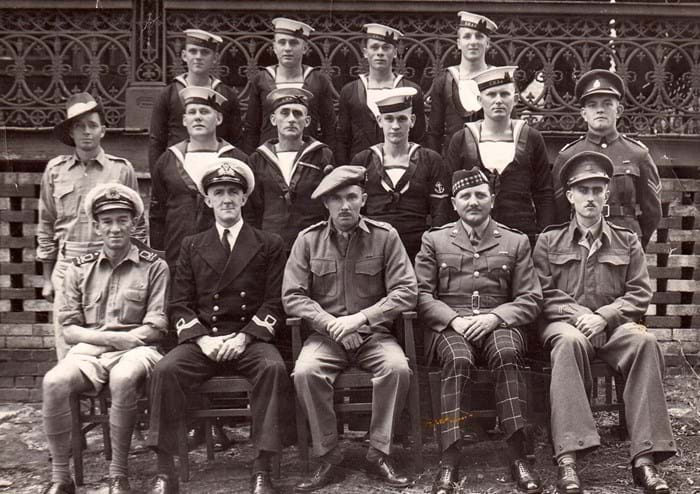
A Military Medal awarded secretly to Major 'Taffy' Morris following Operation Jaywick, one of the most daring raids of the Second World War, sold for a hammer price of £120,000 at Noonans along with his other honours.
The September 1943 attack involved Australian Commandos who targeted Japanese-occupied Singapore Harbour in a vessel disguised as an Asian fishing boat.
Only two British men took part in the mission. The Military Medal given to one of them, Welshman Acting Sergeant, later Major Ronald George ‘Taffy’ Morris of the Royal Army Medical Corps, was among a group of wartime honours offered by Mayfair saleroom Noonans on January 17.
The result was double the low estimate (with the buyer, a UK private collector of gallantry medals, paying 24% buyer’s premium on top).
Morris was attached to the Special Operations Executive (SOE). The collection was being sold by the recipient’s son, Evan, who has recently written a book about his father’s exploits.
Christopher Mellor-Hill, head of client liaison at Noonans, said: “It is such an incredible and audacious story of bravery and daring that was till now unappreciated as one of Special Operations Executive’s most successful Second World War secret missions that resulted in the biggest loss of Japanese shipping tonnage of the entire war.”
The Military Medal was approved by the king on May 17, 1944, on the Secret List, with the instruction that it was not to be published in the London Gazette until it had been taken off the list.
Sabotage missions

A Military Medal awarded secretly to Major 'Taffy' Morris following Operation Jaywick, one of the most daring raids of the Second World War, sold for a hammer price of £120,000 at Noonans along with his other honours.
Morris joined the Royal Army Medical Corps in 1938, and after Japan entered the war he was recruited as a Medical Orderly to join SOE Orient Mission, arriving in Singapore on April 19, 1941. Here he met fellow SOE operative the charismatic old Harrovian Captain Ivan Lyon of the Gordon Highlanders.
The pair of them were soon part of an unorthodox group undertaking clandestine missions, training up local groups in the art of sabotage to be undertaken behind enemy lines.
The Military Medal recognised Morris’ gallantry and distinguished service as medical orderly in the MV Krait during her hazardous 48-day 4000-mile round trip, under the command of Major Lyon, on Singapore Harbour, resulting in the sinking and destruction of seven enemy ships totalling 37,000 tons - the deepest surface waterborne penetration behind enemy lines undertaken by special forces in the Second World War.
The raiders used collapsible canoes (folboats) to attach limpet mines.
With no uniforms, no identity tags, and flying the Japanese flag, there would only have been one outcome for the crew if they were captured - failure was not an option.
Morris was not the only participant to be presented with a Military Medal after the raid. Ship’s cook Corporal Crilly was given one too.

A Military Medal awarded secretly to Major 'Taffy' Morris following Operation Jaywick, one of the most daring raids of the Second World War, sold for a hammer price of £120,000 at Noonans along with his other honours. Morris is pictured far right together with the rest of the crew of the disguised boat used, MV Krait.
Australian hero
Noonans sold another Operation Jaywick honour in December 2020 (when the firm was known as Dix Noonan Webb). After a somewhat chequered period before the war, during which his employment ranged from gold-digging and sailing the South Sea Islands to running a camel racing team and a betting shop, Lt Hubert (Ted) Carse of the Royal Australian Naval Reserve ended up as a hero.
He was skipper and navigator of the MV Krait during Operation Jaywick. His medal group including a 1 Commando Association Cross of Valour, bronze, one clasp for Jaywick, with integral top Commando bar, was estimated at £20,000-40,000, along with Carse’s knuckle knife and a Japanese flag said to have been displayed aboard the Krait during the operation.
The group sold for £38,000 (see ATG No 2472 for more).





